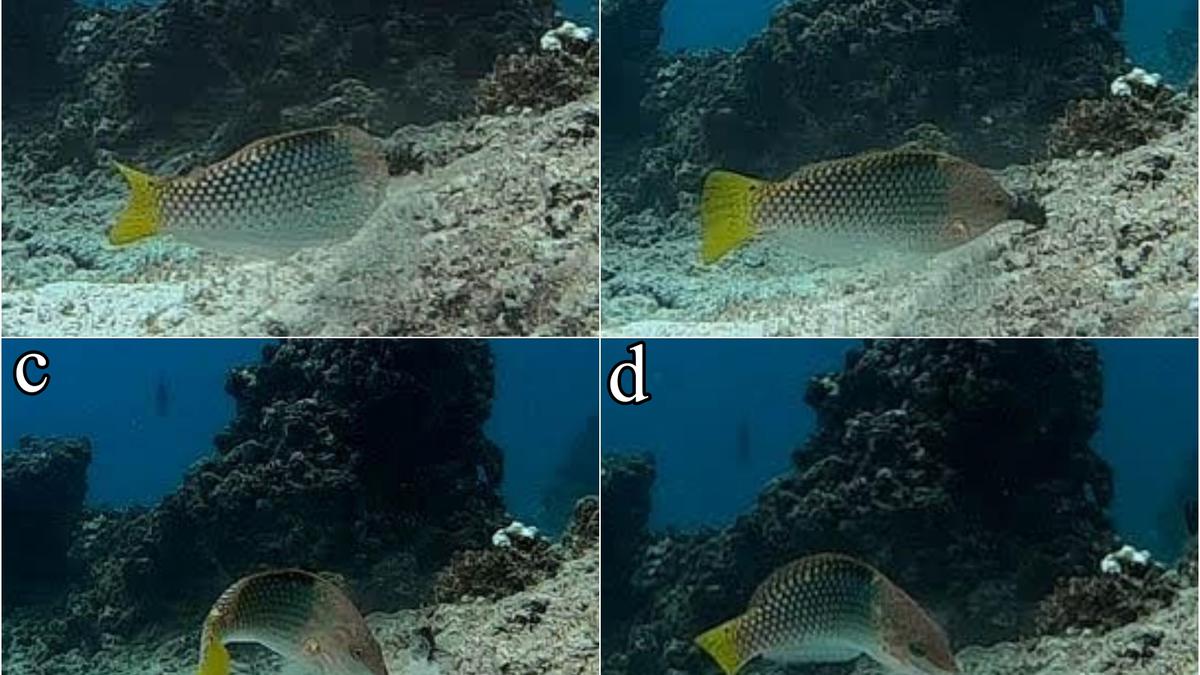
Three new fish species spotted using tools in the Laccadive Sea Premium
The Hindu
Three fish species in the Laccadive Sea use tools, challenging perceptions of fish intelligence and tool-use in animals.
Three fish species that live in the Laccadive Sea, off the southwest corner of the Indian coast, are capable of using tools, we recently found.
All three species used live or dead coral structures as anvils to break the hard shells of sea urchins so they could get to the edible bits inside. The Jansen’s wrasse (Thalassoma jansenii) and the checkerboard wrasse (Halichoeres hortulanus) have never been reported using tools before, and this is the first documented instance of the moon wrasse (Thalassoma lunare) using tools in the wild.
Our study was published in the journal Coral Reefs in February. It adds to the growing number of reports of tool-use in animals. While the sophistication of human tool use, from flints to computers, distinguishes us from other animals, the use of tools itself is more common than scientists first imagined.
Reports of animals like chimpanzees using straws to draw water and crows fashioning leaves to extract insects from crevices are well known whereas reports of aquatic animals using tools have been far less common. This is partly because they are much more difficult to observe and because of the perception that species like fish are ‘less intelligent’. So scientists have thought they are less likely to be capable of complex cognitive tasks.
As with many scientific discoveries, our observations were accidental. We were diving off the western coast of Kavaratti, Lakshadweep, to study the burrowing sea urchin (Echinostrephus molaris). These small urchins are an important agent of reef erosion. They dig deep burrows into the structure of a reef, weakening its overall framework. And they are abundant in Kavaratti.
We were interested in identifying if the urchin had any natural predators that could help regulate its population. To identify these predators, we placed multiple underwater cameras at different points in the reef to observe them undisturbed.
As we expected, few fish were able to prey on the urchin. E. molaris like most sea urchins is covered in an armour of spines. It also has a hard skeleton called a test that protects its internal organs, making it difficult for fish with unspecialised mouth parts to prey on it.













